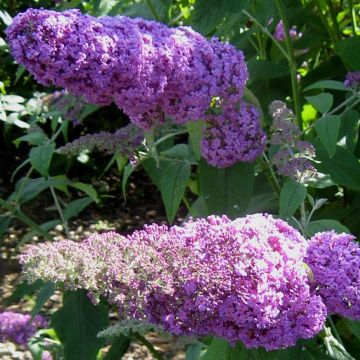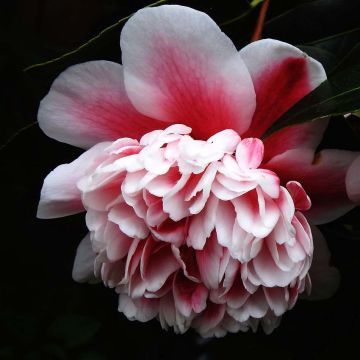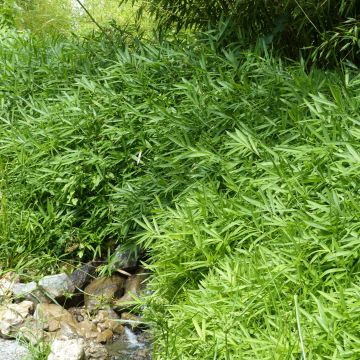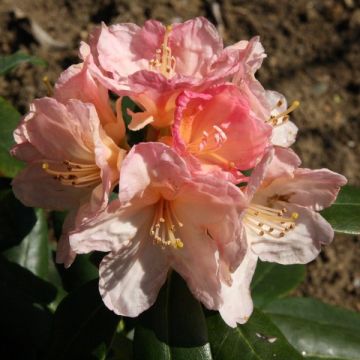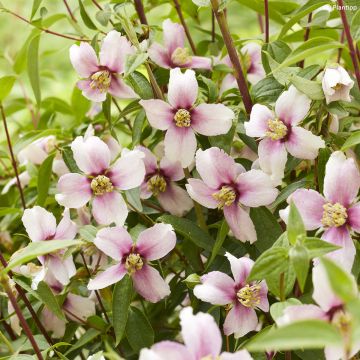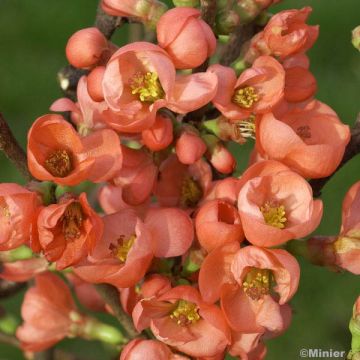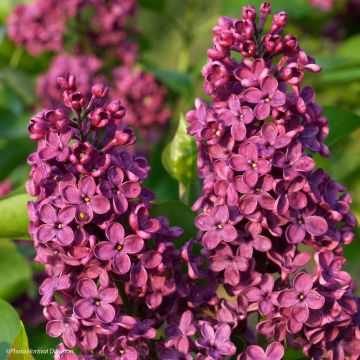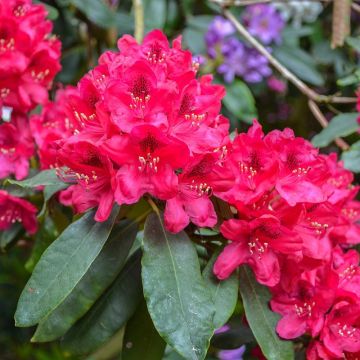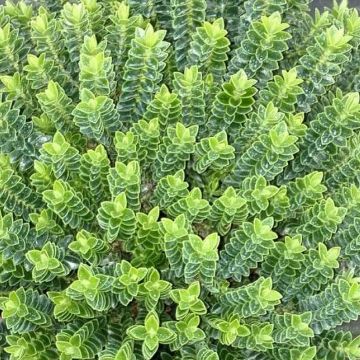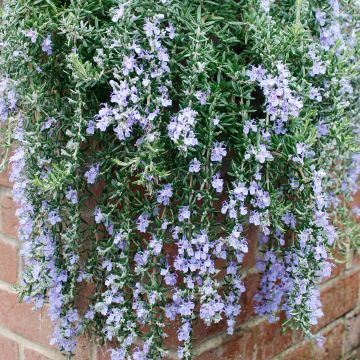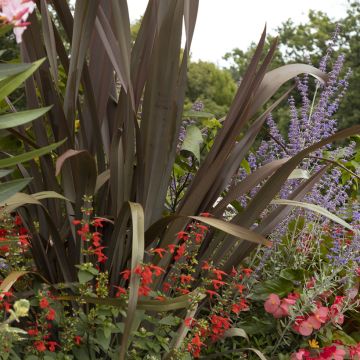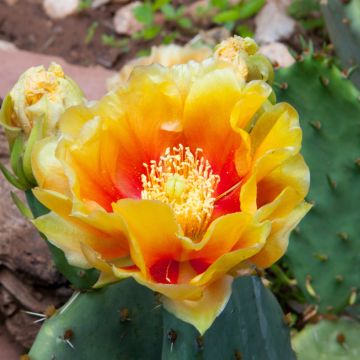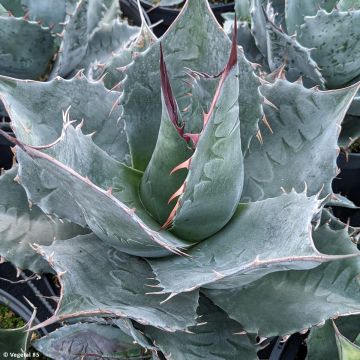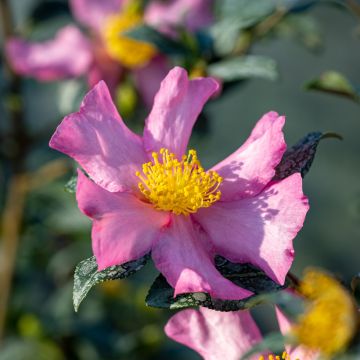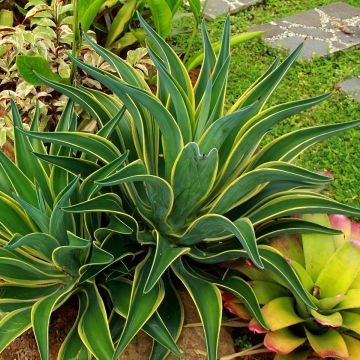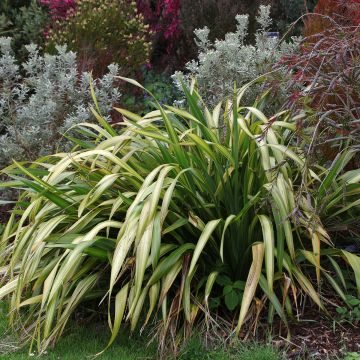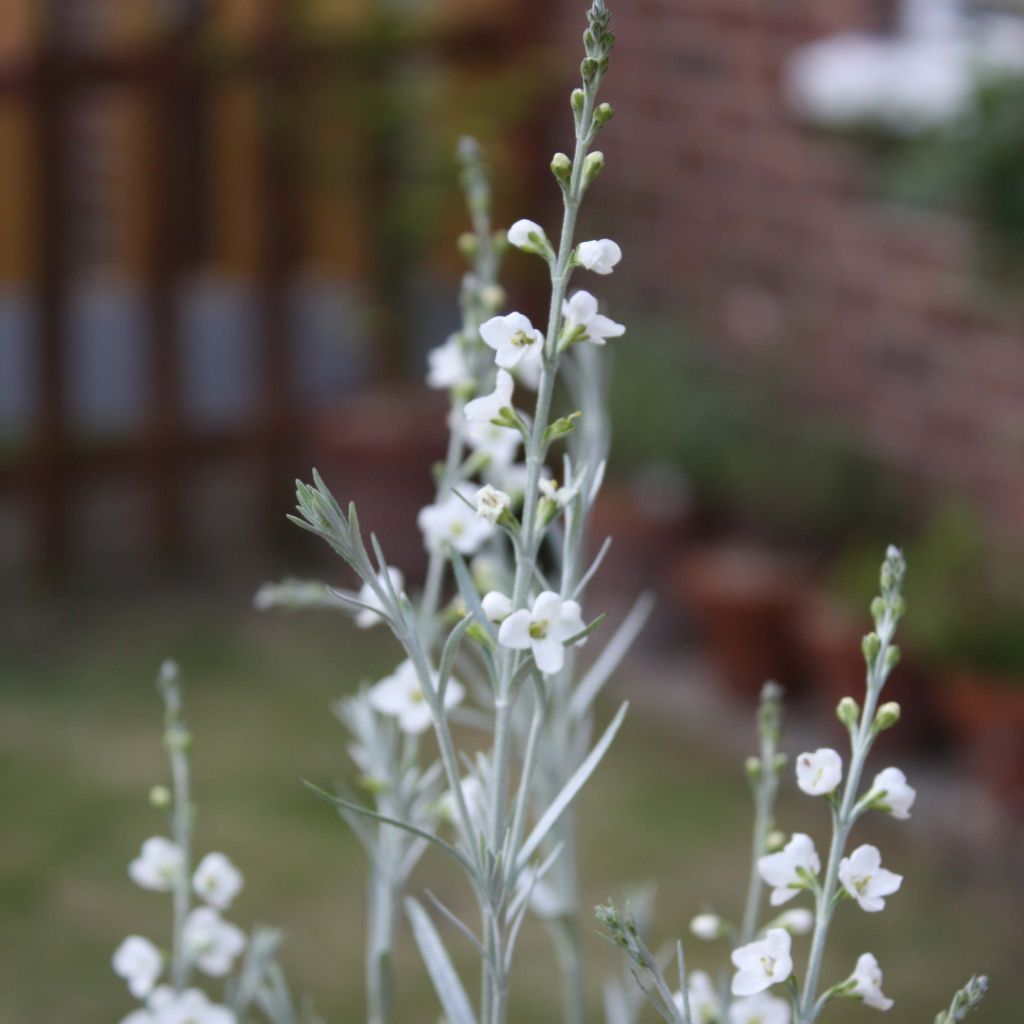

Gomphostigma virgatum White Candy
Gomphostigma virgatum White Candy
Gomphostigma virgatum White Candy
Otter Bush
This item cannot be shipped to the selected country
Delivery charge from €5.90
More information
Schedule delivery date,
and select date in basket
This plant carries a 24 months recovery warranty
More information
We guarantee the quality of our plants for a full growing cycle, and will replace at our expense any plant that fails to recover under normal climatic and planting conditions.
From €5.90 for pickup delivery and €6.90 for home delivery
Express home delivery from €8.90.

Does this plant fit my garden?
Set up your Plantfit profile →
Description
Gomphostigma 'White Candy' is a small South African bush that is quite surprising and should be seen more in gardens with mild climates. It cultivates paradox with undeniable talent: growing its roots in water in its country of origin, it proves to be relatively resistant to drier conditions, which will, however, dry up its flowering in summer. A flexible, bushy habit, with a large silver-coloured cluster sprinkled with small white flowers that the wind tousles, that's the charm of this plant full of poetry, to be absolutely paired with the Angel's Fishing Rods by the water's edge. In drier soil, with weekly watering in summer, its candid flowering will enhance that of red shrubby salvias or the 'Old Blush' rose.
Gomphostigma virgatum is an evergreen bush from the Scrophulariaceae family, just like buddleias, Paulownia or Digitalis. In its country of origin, South Africa, it is called 'Riverstar'. Indeed, it chooses the edges of watercourses in this vast country to flourish. It is also widespread as far as Zimbabwe. 'White Candy' will reach about 1.50m (4ft 11in) in height and 1.20m (3ft 11in) in width, sometimes up to 2m (6ft 7in) in height depending on growing conditions. It develops into a sparsely branched bushy clump, composed of numerous slender, flexible stems, silver-coloured, with very narrow leaves, similar to those of rosemary, also grey-silver in colour. Its long arching branches give it an attractive habit, both bushy and slightly trailing. It is fast-growing and flowers in May-June in a Mediterranean climate, but from June to September-October in a watered oceanic climate or in moist soil. Its small flowers, with 4 round petals of pure white colour around a small green heart, bloom abundantly along the stems. They release a very pleasant but discreet fragrance.
Whether planted alone or in groups, in a hedge or at the back of a perennial bed, Gomphostigma 'White Candy' will enhance the garden. It can withstand temperatures below -10°C (14 °F), allowing it to be grown in the ground along the Atlantic coast and in Mediterranean climates. Its subtly silver-coloured foliage will highlight the red flowers of Grevillea, the pink flowers of Leucophyllum frutescens, and the purple foliage of Loropetalum 'Fire Dance'. It is magnificent by a pond, with the water reflecting the moving mass of its moonlit foliage. You can also plant it at the top of a retaining wall, with broom Genistas, moderate-sized evergreen Ceanothus (C.dentatus, C. griseus 'Yankee Point'), shrubby heathers like E. multiflora in neutral to alkaline soil or E. lusitanica in slightly acidic soil. It adapts well to coastal areas and can be grown in large pots. You can associate this very white Gomphostigma with shrubby Potentillas with yellow or orange flowers, or with daylilies, for an elegant contrast.
In South Africa, birds use the young branches for nesting purposes due to their flexibility. Gomphostigma virgatum is a specific host for a dodder, a curious parasitic plant almost devoid of chlorophyll.
Report an error about the product description
Gomphostigma virgatum White Candy in pictures
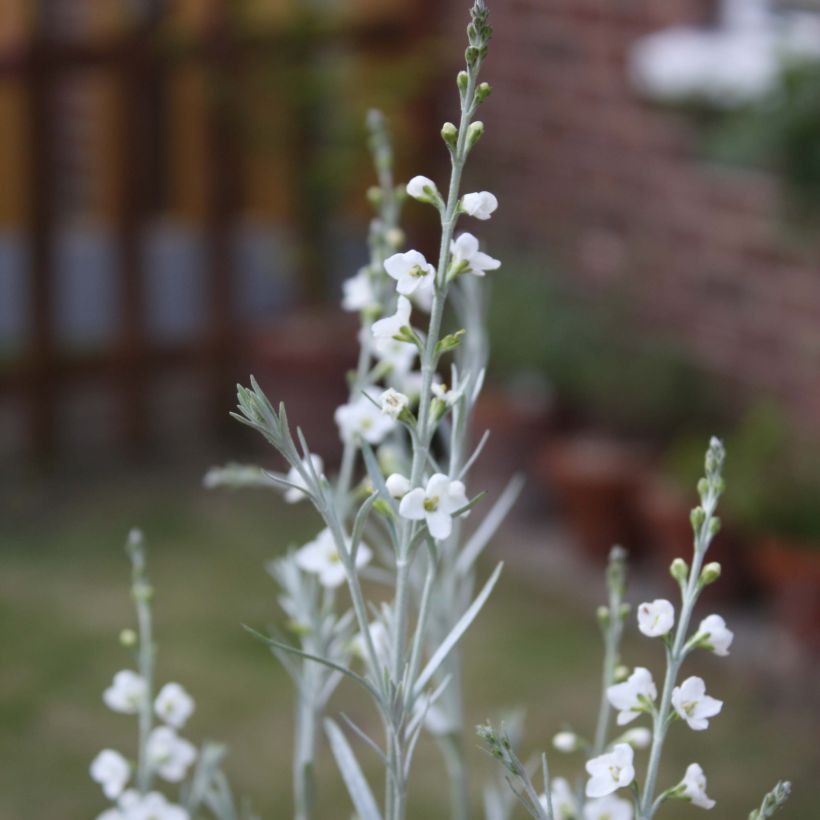

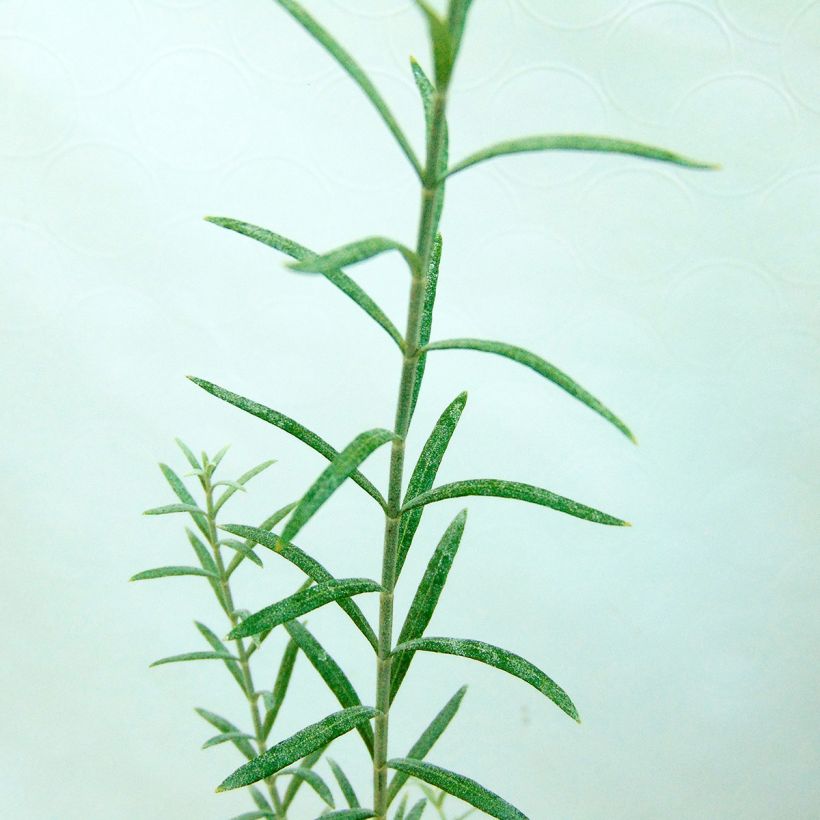

Plant habit
Flowering
Foliage
Botanical data
Gomphostigma
virgatum
White Candy
Scrophulariaceae
Otter Bush
Cultivar or hybrid
Other Shrubs A to Z
Planting and care
Gomphostigma virgatum is easy to grow, as it is a low-maintenance plant when it comes to soil type. Its only weakness lies in its hardiness, which does not exceed -10/-12°C (14/10.4 °F) in well-drained soil. It thrives in sunny locations. Plant it in spring or early autumn in very mild climates, in ordinary soil, even slightly chalky and mediocre, but well-worked, enriched with leaf compost and coarse sand to ensure good drainage. Once established, the plant can tolerate moderate periods of drought. In the Mediterranean region, it is preferable to provide generous watering every two weeks in summer to support flowering. This bush has no significant pests. Pruning it vigorously at the end of winter or beginning of spring enhances the bushy habit of this plant and increases its floribundity.
Propagation: easily done by propagation by cuttings of semi-woody stems taken during the growing season. Layering of young branches also works quite well.
Planting period
Intended location
Care
-
, onOrder confirmed
Reply from on Promesse de fleurs
Evergreen shrubs
Haven't found what you were looking for?
Hardiness is the lowest winter temperature a plant can endure without suffering serious damage or even dying. However, hardiness is affected by location (a sheltered area, such as a patio), protection (winter cover) and soil type (hardiness is improved by well-drained soil).

Photo Sharing Terms & Conditions
In order to encourage gardeners to interact and share their experiences, Promesse de fleurs offers various media enabling content to be uploaded onto its Site - in particular via the ‘Photo sharing’ module.
The User agrees to refrain from:
- Posting any content that is illegal, prejudicial, insulting, racist, inciteful to hatred, revisionist, contrary to public decency, that infringes on privacy or on the privacy rights of third parties, in particular the publicity rights of persons and goods, intellectual property rights, or the right to privacy.
- Submitting content on behalf of a third party;
- Impersonate the identity of a third party and/or publish any personal information about a third party;
In general, the User undertakes to refrain from any unethical behaviour.
All Content (in particular text, comments, files, images, photos, videos, creative works, etc.), which may be subject to property or intellectual property rights, image or other private rights, shall remain the property of the User, subject to the limited rights granted by the terms of the licence granted by Promesse de fleurs as stated below. Users are at liberty to publish or not to publish such Content on the Site, notably via the ‘Photo Sharing’ facility, and accept that this Content shall be made public and freely accessible, notably on the Internet.
Users further acknowledge, undertake to have ,and guarantee that they hold all necessary rights and permissions to publish such material on the Site, in particular with regard to the legislation in force pertaining to any privacy, property, intellectual property, image, or contractual rights, or rights of any other nature. By publishing such Content on the Site, Users acknowledge accepting full liability as publishers of the Content within the meaning of the law, and grant Promesse de fleurs, free of charge, an inclusive, worldwide licence for the said Content for the entire duration of its publication, including all reproduction, representation, up/downloading, displaying, performing, transmission, and storage rights.
Users also grant permission for their name to be linked to the Content and accept that this link may not always be made available.
By engaging in posting material, Users consent to their Content becoming automatically accessible on the Internet, in particular on other sites and/or blogs and/or web pages of the Promesse de fleurs site, including in particular social pages and the Promesse de fleurs catalogue.
Users may secure the removal of entrusted content free of charge by issuing a simple request via our contact form.
The flowering period indicated on our website applies to countries and regions located in USDA zone 8 (France, the United Kingdom, Ireland, the Netherlands, etc.)
It will vary according to where you live:
- In zones 9 to 10 (Italy, Spain, Greece, etc.), flowering will occur about 2 to 4 weeks earlier.
- In zones 6 to 7 (Germany, Poland, Slovenia, and lower mountainous regions), flowering will be delayed by 2 to 3 weeks.
- In zone 5 (Central Europe, Scandinavia), blooming will be delayed by 3 to 5 weeks.
In temperate climates, pruning of spring-flowering shrubs (forsythia, spireas, etc.) should be done just after flowering.
Pruning of summer-flowering shrubs (Indian Lilac, Perovskia, etc.) can be done in winter or spring.
In cold regions as well as with frost-sensitive plants, avoid pruning too early when severe frosts may still occur.
The planting period indicated on our website applies to countries and regions located in USDA zone 8 (France, United Kingdom, Ireland, Netherlands).
It will vary according to where you live:
- In Mediterranean zones (Marseille, Madrid, Milan, etc.), autumn and winter are the best planting periods.
- In continental zones (Strasbourg, Munich, Vienna, etc.), delay planting by 2 to 3 weeks in spring and bring it forward by 2 to 4 weeks in autumn.
- In mountainous regions (the Alps, Pyrenees, Carpathians, etc.), it is best to plant in late spring (May-June) or late summer (August-September).
The harvesting period indicated on our website applies to countries and regions in USDA zone 8 (France, England, Ireland, the Netherlands).
In colder areas (Scandinavia, Poland, Austria...) fruit and vegetable harvests are likely to be delayed by 3-4 weeks.
In warmer areas (Italy, Spain, Greece, etc.), harvesting will probably take place earlier, depending on weather conditions.
The sowing periods indicated on our website apply to countries and regions within USDA Zone 8 (France, UK, Ireland, Netherlands).
In colder areas (Scandinavia, Poland, Austria...), delay any outdoor sowing by 3-4 weeks, or sow under glass.
In warmer climes (Italy, Spain, Greece, etc.), bring outdoor sowing forward by a few weeks.

































